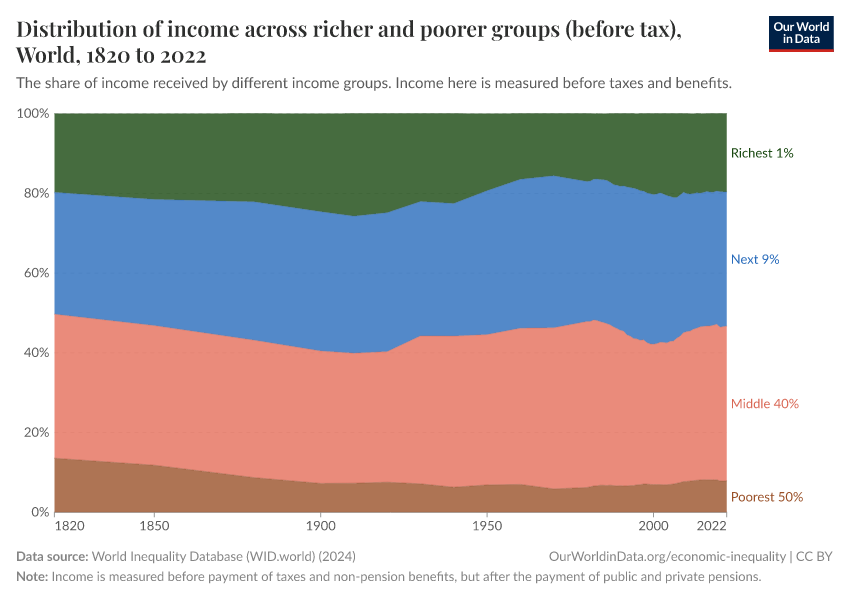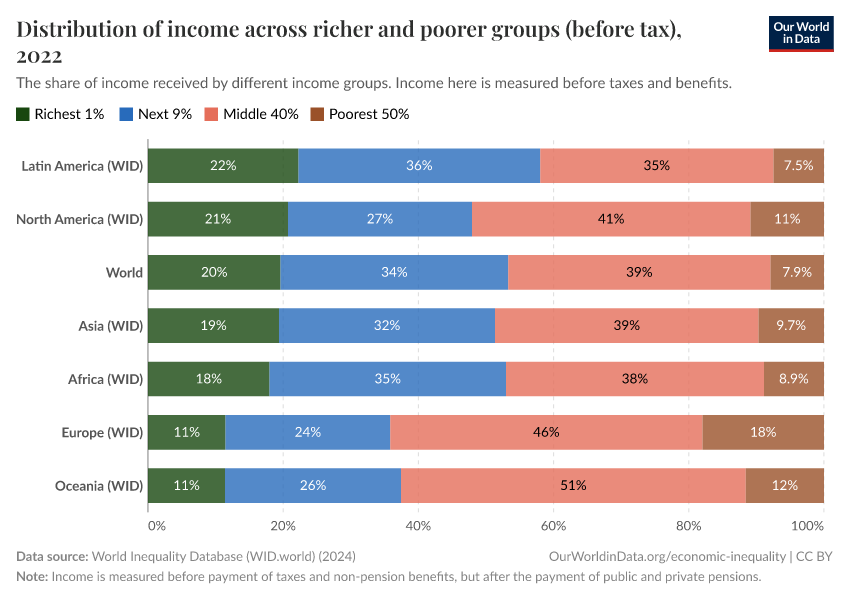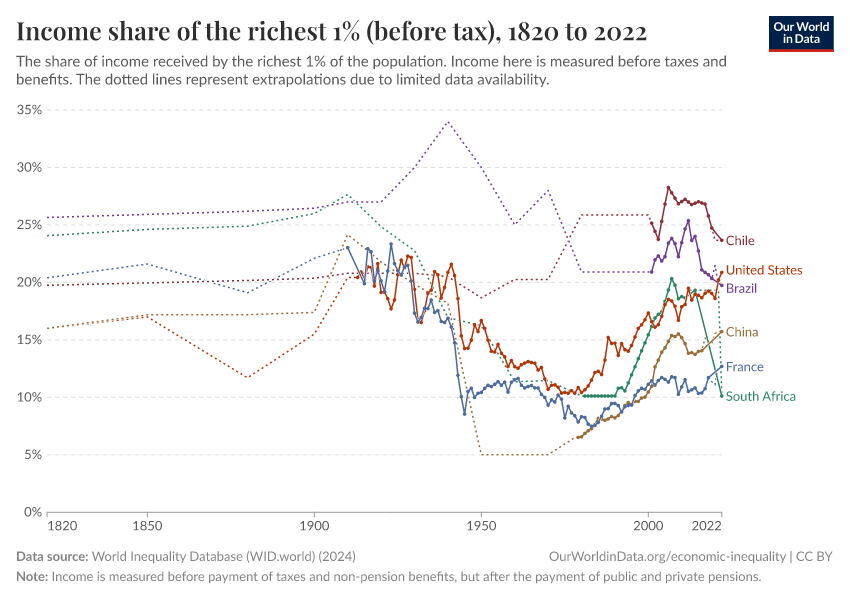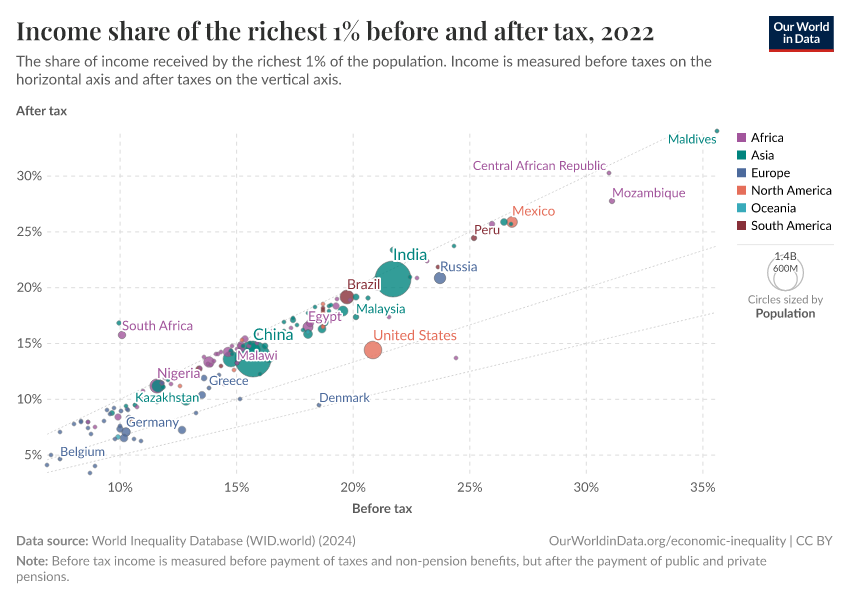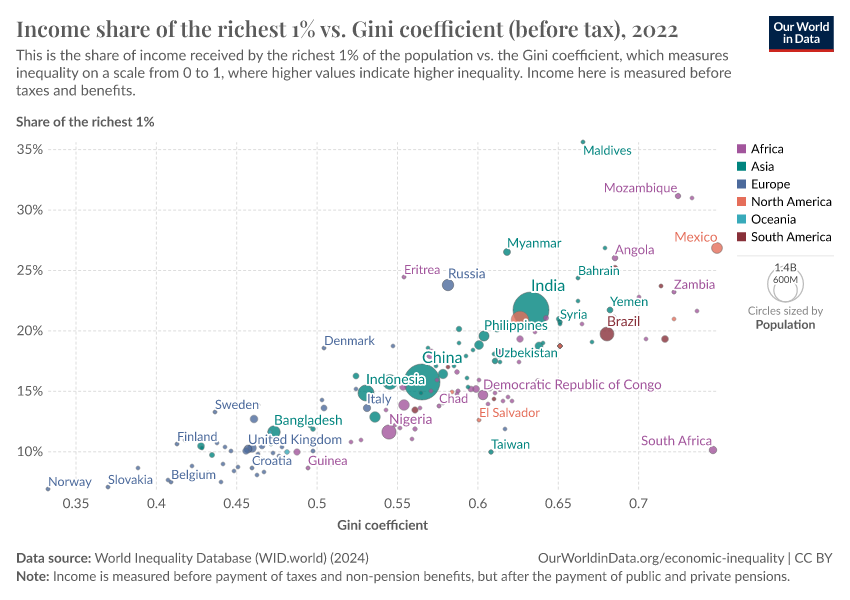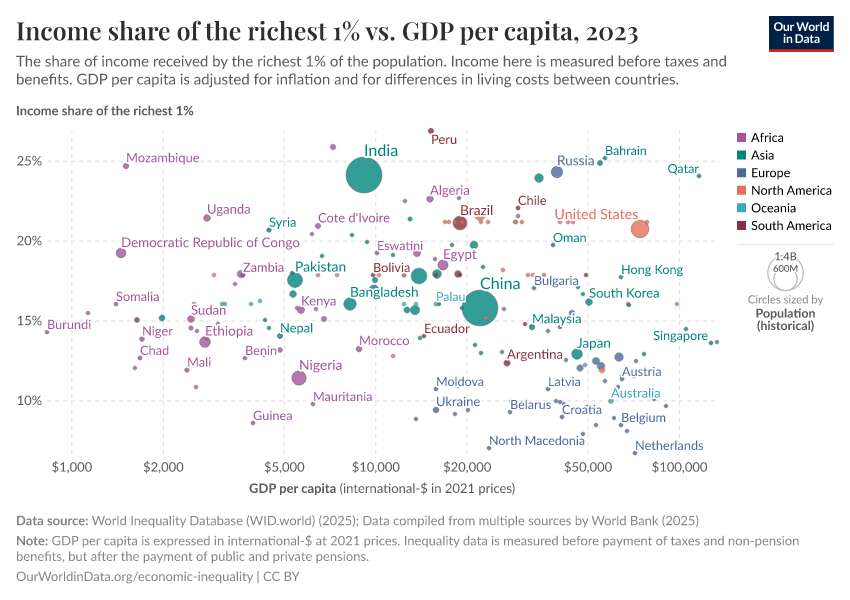Income share of the richest 1% (before tax)
What you should know about this indicator
- Income is "pre-tax" — measured before taxes have been paid and most government benefits have been received. It is, however, measured after the operation of pension schemes, both private and public.
- The data is estimated from a combination of household surveys, tax records and national accounts data. This combination can provide a more accurate picture of the incomes of the richest, which tend to be captured poorly in household survey data alone.
- These underlying data sources are not always available. For some countries, observations are extrapolated from data relating to other years, or are sometimes modeled based on data observed in other countries. For more information on this methodology, see this related technical note.
Related research and writing
Sources and processing
This data is based on the following sources
How we process data at Our World in Data
All data and visualizations on Our World in Data rely on data sourced from one or several original data providers. Preparing this original data involves several processing steps. Depending on the data, this can include standardizing country names and world region definitions, converting units, calculating derived indicators such as per capita measures, as well as adding or adapting metadata such as the name or the description given to an indicator.
At the link below you can find a detailed description of the structure of our data pipeline, including links to all the code used to prepare data across Our World in Data.
Notes on our processing step for this indicator
We extract estimations of Gini, mean, percentile thresholds, averages, and shares via the wid Stata command. We calculate threshold and share ratios by dividing different thresholds and shares, respectively.
Interpolations and extrapolations are excluded by using the option exclude in the Stata command.
Reuse this work
- All data produced by third-party providers and made available by Our World in Data are subject to the license terms from the original providers. Our work would not be possible without the data providers we rely on, so we ask you to always cite them appropriately (see below). This is crucial to allow data providers to continue doing their work, enhancing, maintaining and updating valuable data.
- All data, visualizations, and code produced by Our World in Data are completely open access under the Creative Commons BY license. You have the permission to use, distribute, and reproduce these in any medium, provided the source and authors are credited.
Citations
How to cite this page
To cite this page overall, including any descriptions, FAQs or explanations of the data authored by Our World in Data, please use the following citation:
“Data Page: Income share of the richest 1% (before tax)”, part of the following publication: Joe Hasell, Bertha Rohenkohl, Pablo Arriagada, Esteban Ortiz-Ospina and Max Roser (2023) - “Economic Inequality”. Data adapted from World Inequality Database (WID.world). Retrieved from https://ourworldindata.org/grapher/income-share-top-1-before-tax-wid [online resource]How to cite this data
In-line citationIf you have limited space (e.g. in data visualizations), you can use this abbreviated in-line citation:
World Inequality Database (WID.world) (2025) – with major processing by Our World in DataFull citation
World Inequality Database (WID.world) (2025) – with major processing by Our World in Data. “Income share of the richest 1% (before tax) – World Inequality Database – Before tax” [dataset]. World Inequality Database (WID.world), “World Inequality Database (WID)” [original data]. Retrieved April 8, 2025 from https://ourworldindata.org/grapher/income-share-top-1-before-tax-wid